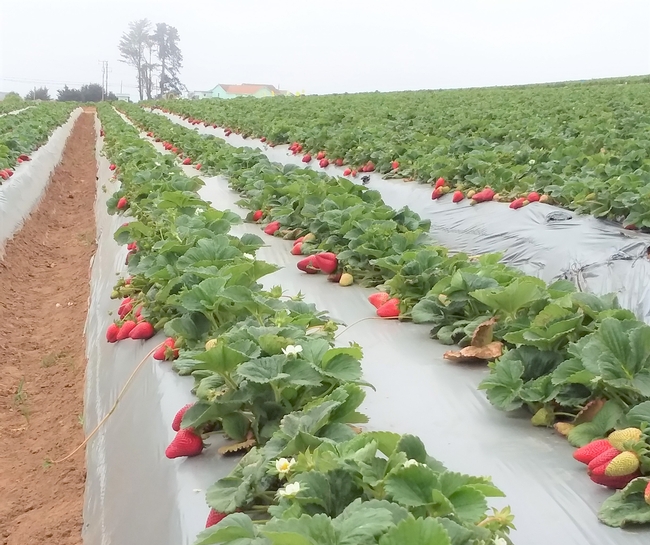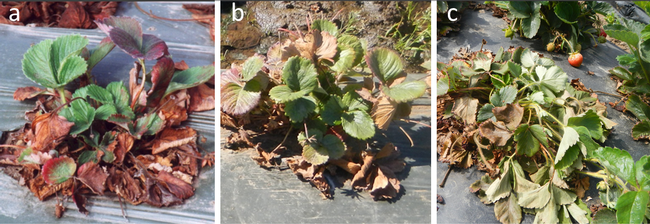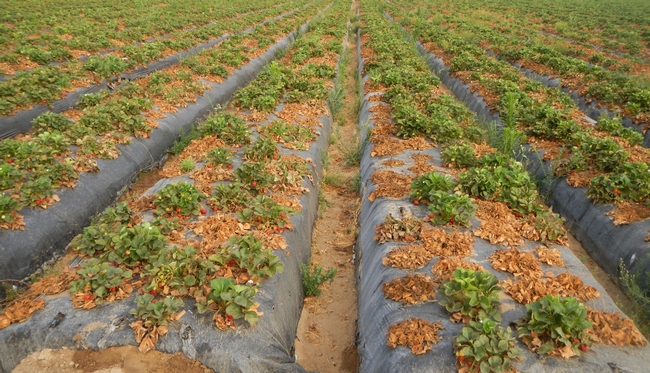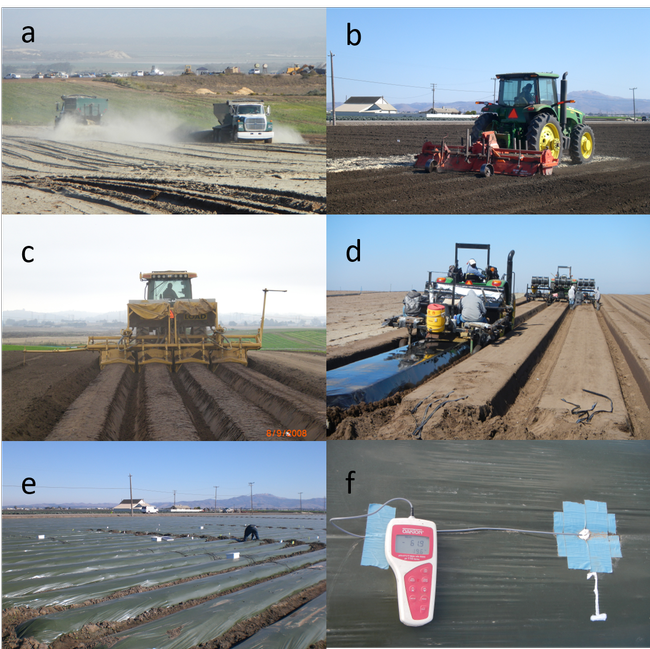Strawberries, which generated $2.2 billion for California growers mainly on the coast in 2019, are sensitive to soilborne diseases. Strawberry plant roots infected by fungi are unable to take in nutrients and water, causing the leaves and stems to wilt. The diseases reduce fruit yields and eventually kill infected plants.
To protect the delicate plants from pathogens, strawberry growers fumigate the soil with pesticides such as chloropicrin and 1,3-dichloropropene before planting transplants. Due to the potential negative effects on the environment and human health, however, use of fumigants are highly regulated and developing non-fumigant alternatives has been a priority of the strawberry industry.
For a biological alternative to manage soilborne diseases in strawberries, Joji Muramoto, UC Cooperative Extension organic production specialist based at UC Santa Cruz, has received a $411,395 grant from USDA National Institute of Food and Agriculture to study the ability of other crops to suppress strawberry pathogens in the soil.
Verticillium wilt, caused by Verticillium dahliae, is a common soilborne disease that can be controlled with anaerobic soil disinfestation (ASD), a fermentation-based biological treatment using carbon sources such as rice bran under plastic mulch in moist soils for 3 to 5 weeks in autumn. About 2,000 acres of berry fields, mostly organic, were treated with ASD in California and Baja California, Mexico, in 2019.
In 2008-09, the diseases fusarium wilt, caused by Fusarium oxysporum f. sp. fragariae, and charcoal rot, caused by Macrophomina phaseolina, emerged in Southern California and now threaten strawberry plants throughout the state.
ASD isn't as effective against F. oxysporum and M. phaseolina unless it is applied in summer on the coast. As saprophytes, they feed not only on living plants, but also can colonize crop residues and rice bran especially at lower coastal temperatures in autumn. Treating fields on California's coast with ASD during summer is difficult because it competes with the vegetable production period.
Based on promising studies in Asia and other areas, Muramoto plans to test alliums – such as onion, bunch onion and leek – and a certain variety of wheat (Summit 515) to see if they will suppress F. oxysporum and M. phaseolina. His team will conduct a series of greenhouse and field trials and test these crops with and without ASD to compare the effects on soilborne pathogens.
“Studies have shown the potential of using allium crops to control Fusarium wilt, and Summit 515 wheat for charcoal rot,” Muramoto said. “Our goal is to examine the effectiveness of suppressive crops, optimize them for California strawberry production systems, and evaluate their economic feasibility for commercial use.”
“No single tactic is likely to replace fumigants,” he said. “Integration of multiple biological approaches such as crop rotation, ASD, and use of resistant strawberry varieties is a key to develop a successful non-fumigant-based soilborne disease management strategy for strawberries. This project is a part of such broader efforts.”
At the end of the three-year study, he plans to share the results at workshops, field days and webinars.
Rachael Goodhue, UC Davis professor of agricultural economics; Carol Shennan, UC Santa Cruz professor of environmental studies; and Peter Henry, USDA Agricultural Research Service plant pathologist, are co-principal investigators on the study with Muramoto.
Also collaborating on the project are Christopher Greer, UC Cooperative Extension integrated pest management area advisor in San Luis Obispo County; Oleg Daugovish, UCCE vegetable and strawberry advisor in Ventura County; Mark Bolda, UCCE director strawberry and cane berry advisor in Santa Cruz County; Jan Perez, food systems specialist, and Darryl Wong, farm research manager, at UC Santa Cruz Center for Agroecology and Sustainable Food Systems; Miguel Ramos of Ramos Farm; Agriculture and Land-Based Association (ALBA); Driscoll's; Naturipe; and The Oppenheimer Group.



